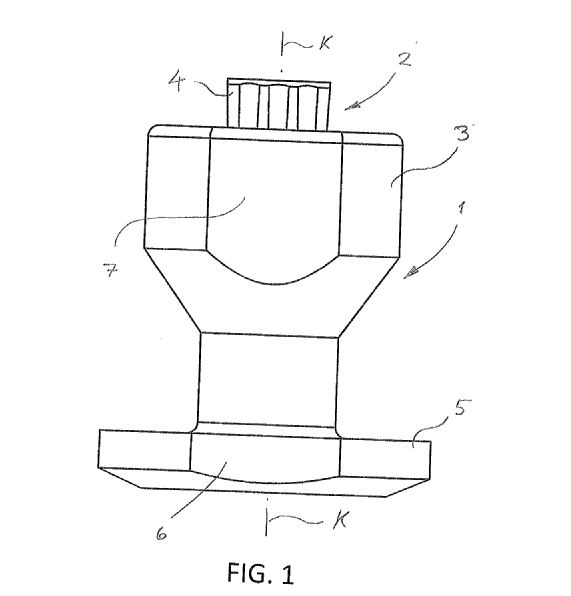What must a patent application include?
Your patent application must include:
- an application form (paper or online form)
- a description of your invention
- claims
- an abstract
- drawings if they illustrate your invention
- an indication of a deposit if the application involves a deposit of biological material as referred to in section 8 a of the Finnish Patents Act.
Read more below about the documents you must include with your application form.
You may also need:
- a statement on the right to the invention if you are not the inventor or you have not made the invention on your own
- a power of attorney if you use an attorney or agent.
Please note that you should prepare your patent application carefully right from the start, as you have very limited possibilities to add or change any details in the application later.
Use our template when writing your application.
Open the application template (rtf, 60.4 KB)
Instructions for using the template (rtf, 71.0 KB)
Description of your invention
The description of the invention must always be in written form. The description must be so clear that a person skilled in the field is able to use the invention, otherwise the application may be rejected or a granted patent invalidated.
The description must begin with a short and factual title of the invention.
Start the description by setting out the scope of application of your invention and explain the particular technical problem that it solves. Indicate also what the solution is. Describe the technical features of the invention and how it differs from solutions that already exist. The description must be so complete that a person skilled in the field is able to make or use the device or product.
Lastly, give at least one detailed example of how the invention can be applied. In some cases, you must give more than one examples, as the example must illustrate all claims (read more about claims below).
Drawings

We recommend that you submit drawings, as they often help the reader to understand the description. Each drawing page can contain one or several figures, and each figure should be labelled with consecutive numbers (‘Figure 1’ or ‘fig. 1’, ‘Figure 2’ or ‘fig. 2’ and so on). The figure only shows the most important details using reference numbers or letters (for example 1, 2a, 2b) to make it easier to understand the description.
The drawings must not contain any descriptive text or any other markings than those mentioned in the description. Short expressions such as ‘water’, ‘steam’, ‘section A-B’, or ‘closed’ are however accepted.
Claims
If a patent is granted, the claims set out what is protected by the patent. That is why you should write your claims carefully. Our patent examiners assess the patentability of your invention by examining the claims and comparing the invention defined in them to solutions that already exist. In other words, the claims must exactly set out what you want the patent to protect. Do not refer to the description or the abstract in the claims but do use reference numbers or letters, preferably in parentheses, which refer to the drawings.
Preamble and characterising part in claims
Number each claim. The claims consist of two parts – a preamble and a characterising part. The preamble sets out the features of your invention that are already known, and the characterising part the new and inventive features of your invention. Add the phrase ‘characterised in that’ or an equivalent expression after the preamble. In other words, begin by describing the features of your invention that are already known, then add ‘characterised in that’ and describe the new and inventive features of your invention.
Invention categories
Normally, the claims relate to the following invention categories:
- device,
- process
- product, or
- use.
One single patent application may include several different types of invention categories but they must share the same inventive idea.
Independent and dependent claims
A patent application may include several claims, both independent and dependent claims. Independent claims set out all the features of the invention that are necessary for achieving the intended effect. Dependent claim give more detailed information about the invention, set out additional features and give alternative embodiments. Indicate in each dependent claim which independent claim it refers to, for example ‘A device according to claim 1, characterised in that…’.
Abstract
The abstract must in an easily understandable way disclose the technical problem to which the invention relates, the basic principles of how the invention solves the problem, and the primary field or fields of use for the invention. You can for instance include the content of the independent claims in the abstract but using easily understandable language.
If your patent application contains a drawing, you choose the figure that best illustrates your invention to be published together with the abstract. Each special feature of the invention presented in the abstract and illustrated by a figure must be provided with a reference number or letter in parentheses. The abstract should not contain more than 150 words. See an example of an abstract. Open link in a new tab
Deposit of biological material
Biological material must be deposited if the carrying out of an invention involves the use of biological material that is neither available to the public nor can be described in the description part in the application in such a way that a person skilled in the art (an average expert) can reproduce the invention. The biological material is deposited in accordance with the international Budapest Treaty. The list of depositary institutions under the Budapest Treaty is published on the WIPO website.Open link in a new tab There is more information in Finnish in our manual “Patenttikäsikirja" (pdf, 2.1 Mt)(items A.4.1.1 and I.2.1).
